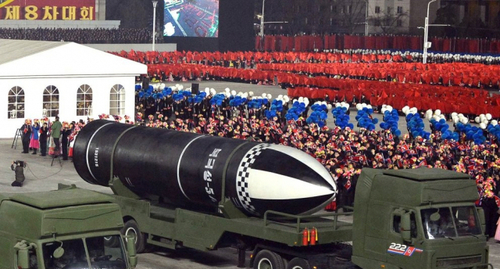‘North Korea is the enemy’
 viewer
viewer
In the ‘2020 Defense White Paper’, the second published by the Moon Jae-in administration, the expression’North Korea is an enemy’ is omitted, and Japan is described as’neighbor country’ instead of’companion’.
According to a white paper published by the Ministry of Defense on the 2nd, like the ‘2018 Defense White Paper’, “Our military considers forces that threaten and infringe on the sovereignty, land, people and property of the Republic of Korea as our enemies.” “North Korea’s weapons of mass destruction Is a threat to peace and stability on the Korean Peninsula.”
This can be interpreted as an extension of the government’s 5th year in power, expressing its willingness to concentrate its final policy capabilities in relation to the operation of the’peace process on the Korean Peninsula’ this year. It is also interpreted as a dimension to minimize unnecessary stimulation to North Korea.
However, criticism is expected to come out as excessive “watching eyes” as North Korea launched a test launch of a short-range ballistic missile in 2019 and released new tactical and strategic weapons one after another, following the 8th Party Congress.
It is also characteristic that this white paper reflects the deteriorating relationship between Korea and Japan. The white paper describes Japan as second only to China this year in the technology related to defense exchange and cooperation with neighboring countries, and expressed it as “neighboring countries that must cooperate not only for bilateral relations, but also for peace and prosperity in Northeast Asia and the world.”
Compared to the description of the ‘2018 Defense White Paper’, “The two countries are geographically and culturally close neighbors and partners who must cooperate together for world peace and prosperity.”
In particular, the provocation of Dokdo by Japanese political leaders, the close threat flight of the Japanese patrol aircraft in 2018, and the unilateral press release misleading the facts, and Korea-Japan defense relations suffered difficulties, and in July 2019, due to Japan’s export control measures. The white paper pointed out that it is becoming an obstacle to future-oriented development.
The white paper also mentioned the situation in which the government has suspended the notification of the end of the Korea-Japan Military Information Protection Agreement (GSOMIA) as a condition of talks to withdraw Japan’s export restrictions. “We will continue to deal with Japan’s historical distortions, unfair sovereignty over Dokdo, and one-sided and arbitrary measures in pending issues, while continuing to cope with common security issues for peace and stability in the Korean Peninsula and in Northeast Asia. We will continue to cooperate.”
Earlier, the Japanese Ministry of Defense also deleted the expression’extensive cooperation’ for Korea in the ‘2020 Defense White Paper’ published in July last year.
 viewer
viewer
With regard to China, the situation in 2016, which caused a conflict over the issue of the deployment of the high-altitude missile defense system (THAAD), has been deleted. Instead, efforts to normalize bilateral relations have been described, starting with the 2017 Korea-China summit meeting in 2017, the first year of President Moon Jae-in’s inauguration.
In this white paper, the Ministry of National Defense included’the significance and implementation achievements of the September 19 military agreement’,’Introduction of alternative service for conscientious objectors according to religious beliefs’,’Use of mobile phones after work’, and’New coronavirus infection in our military (Corona 19). ) Issues that self-evaluate based on defense performance, such as’response’, were organized into’special appendix’.
The Defense White Paper is published to inform the government’s defense policy both internally and externally. It is published annually from 1988 to 2000, and has been produced every two years since 2004.
The 2020 Defense White Paper, consisting of a total of 362 pages, will be distributed to government agencies, the National Assembly, and libraries during this month, and can be downloaded from the Ministry of Defense website. In addition, a summary in English, Japanese, Russian and Chinese will be published during the first half of the year.
/ Reporter Kim Jung-wook [email protected]
< 저작권자 ⓒ 서울경제, 무단 전재 및 재배포 금지 >
